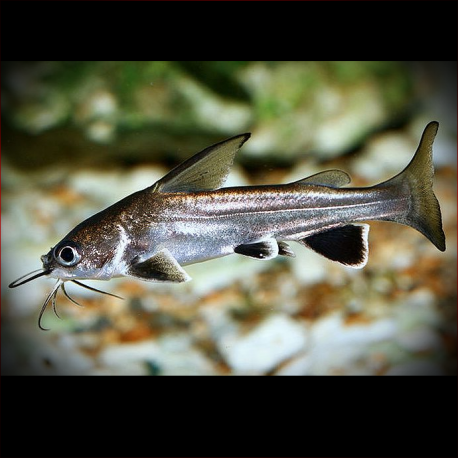More info
Datasheet
| Minimum Tank Size | 28 litres / 7.40 US gallons |
| Maximum Size | 25.4cm / 10.00inches |
| Temperament | Peaceful |
| Care Description | Easy |
| Temperature | 23.3°C / 73.94°F - 26.1°C / 78.98°F |
| Carbonate Hardness | 10-12 |
| pH | 7.0-7.5 |
General Description
The Columbian Shark, also known as the Black Fin Shark, Jordan's Catfish, or West American Cat Shark, is a larger catfish species characterized by its high dorsal fin and long whiskers, typical of catfish. This species can grow significantly large in an aquarium, reaching up to 25.4cm in size. With a peaceful temperament, the Columbian Shark is a yellow-colored fish that adds an intriguing touch to aquariums.
Aquarium Setup
Creating a tank environment that mimics the natural habitat of the Columbian Shark is crucial for its well-being. A minimum tank size of 70 gallons (approximately 265 litres) is recommended due to the shark's large size and activity levels. An ideal setup would include plenty of plants and rocks to provide hiding spots and enrichment for the fish. The Columbian Shark thrives in water conditions with a pH level between 7.0-7.5, a temperature range of 23.3-26.1°C, and a moderate hardness of 10-12 dKH. Additionally, incorporating some aquarium salt into the water is advisable as this species benefits from it.
Behaviour
Known for their peaceful demeanor, Columbian Sharks tend to get along well with tank mates of similar size and temperaments. However, as they grow larger, they may exhibit predatory behavior towards smaller fish in the tank. This species enjoys exploring its environment and will appreciate having ample hiding places to feel secure.
Feeding and Diet
As omnivores, Columbian Sharks have diverse dietary needs that can be met with sinking catfish pellets, bloodworms, and high-quality algae-based foods. Providing a varied diet ensures that the fish receives all the essential nutrients for optimal health. Regular feeding schedules and monitoring of food intake are essential to maintain the shark's well-being.
Reproduction & Dimorphism
In the reproduction process of Columbian Sharks, the female lays eggs which the male then incubates in his mouth to safeguard them until hatching. This unique behavior contributes to the species' reproductive success. Dimorphism in Columbian Sharks is not prominently visible, with both males and females sharing similar physical characteristics.
Habitat and Distribution
Columbian Sharks, belonging to the Ariidae family with the scientific name Arius jordani, are native to habitats that span from freshwater to saltwater environments. Found in regions like West America, these catfish prefer areas with moderate water flow and sufficient shelter. Their distribution encompasses various water bodies that offer a mix of freshwater and saltwater conditions, highlighting their adaptability to diverse environments.

